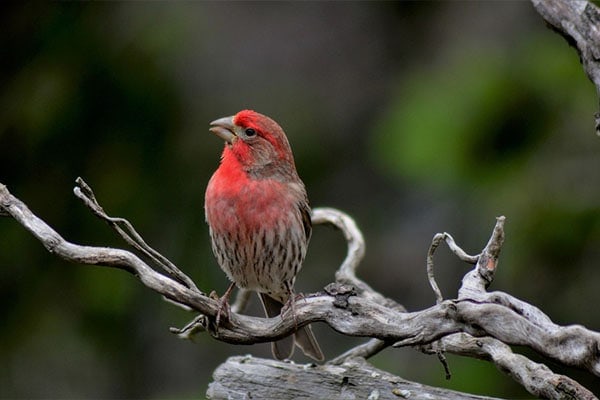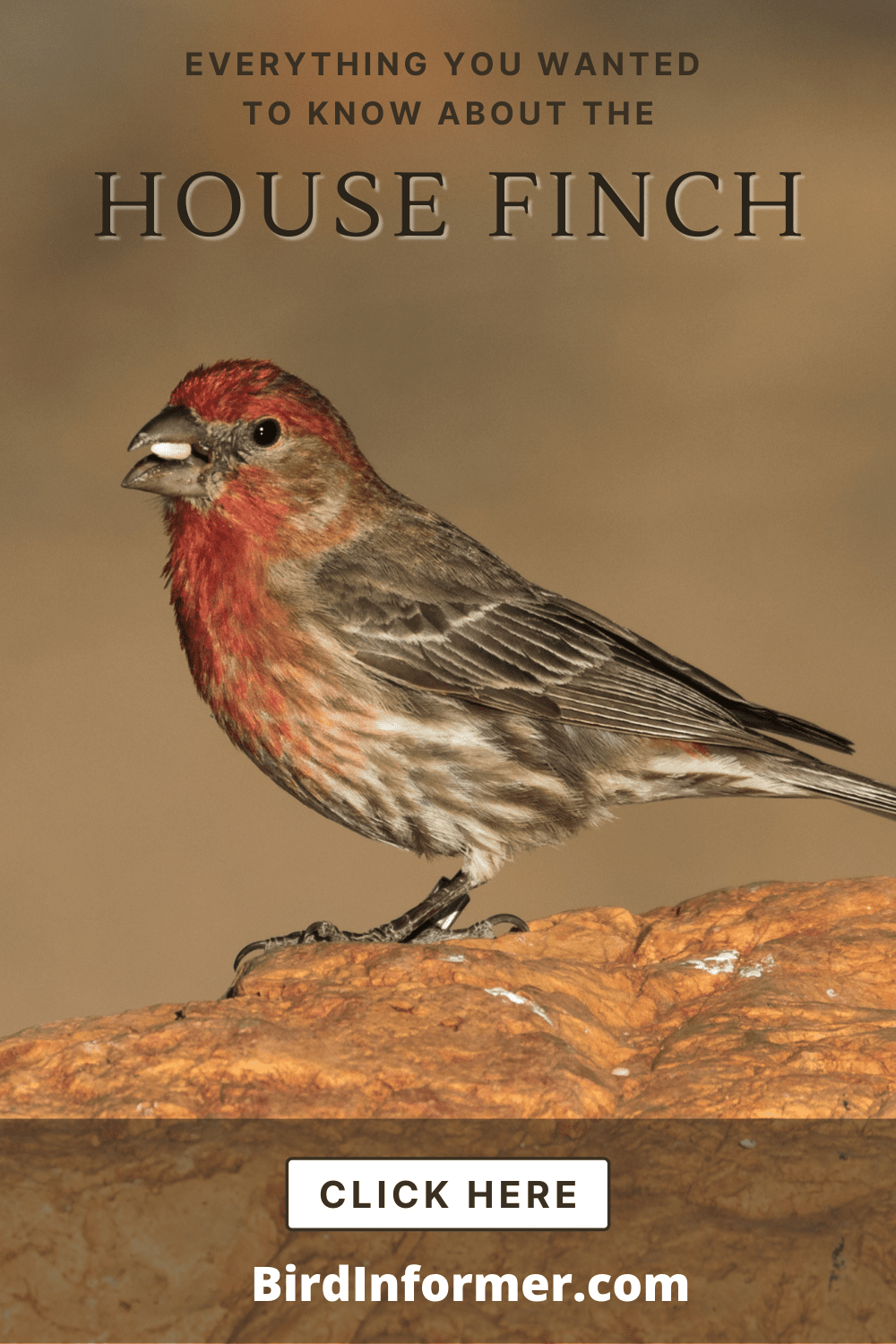Contents
The House Finch is common across North America as well as in Hawaii. They are newly introduced in the eastern part of the United States but have received a warm welcome because of their beautiful red colors. They also feature short, thick bills and are similar in shape to other finches. Most people also find them very similar to Purple Finches because of their reddish colors.
In this article, we are going to cover a wide variety of topics related to the House Finch, such as:
- How to identify them
- How, when, and where they migrate
- Their diet
- How and where they nest
- And much more…
So, without any more delay…
Let’s jump right into it and learn more about the House Finch.
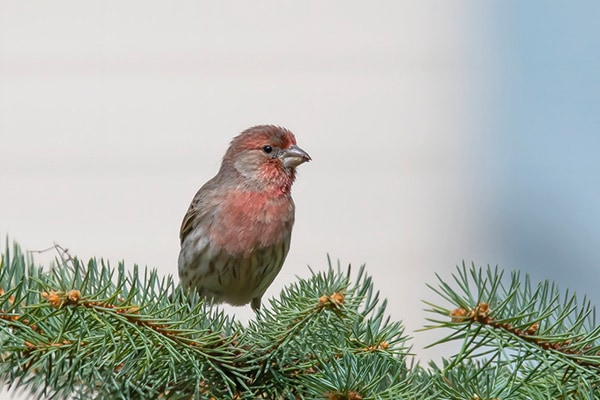
House finch facts
- Common Name: House Finch
- Scientific Name: Haemorhous mexicanus
- Scientific Family: Fringillidae
- Life Span: 11 years
- Size: 5.1 to 5.5 inches
- Wingspan: 7.9 to 9.8 inches
- Weight: 0.6 to 0.9 oz
- Conservation status: Least Concern (LC)
House finch: how-to identify
House Finches are small-sized birds with large beaks, long flat heads, long tails, and short wings. Compared to most finches, House Finches have a shallow notch in their tails. It’s also observed that their necks are thicker in proportion to their body shape and size.
Differences Between Male & Female
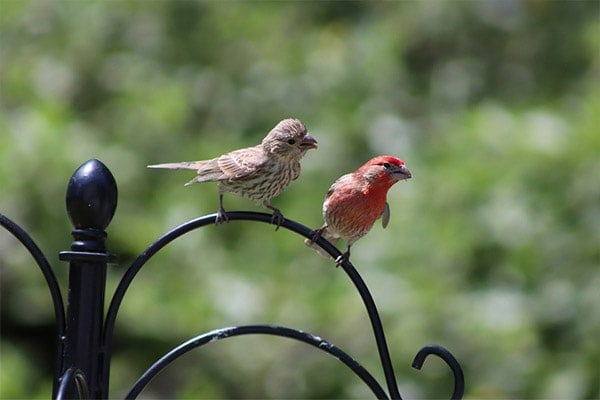
Male House Finches are often confused with the Purple Finches as they feature almost the same color pattern. They are often seen with a red-orange to reddish-brown head, throat, and chest areas. The back area is brownish and streaked with red, while the belly area is white with brown streaks. Their wings, tail, and sides are also brown.
Female House Finches, on the other hand, aren’t red. Instead, they are grayish-brown in color, their faces are plain, and underparts are white with brown streaks. Wings, tail, and sides are brown overall also.
Differences In Summer Plumage vs Winter Plumage
There’s no significant difference between the color pattern of House Finch in summer and winter. These birds don’t molt, too. However, for male House Finches, it has been observed that their feathers range from yellow to bright red depending on their diet.
It has been found that the more carotenoid-rich foods they eat, the redder these birds become. So, when there are more carotenoid-rich foods available, the bright red their feathers become. If they eat less of it, the birds become yellow.
House finch bird vocalization
Where You’ll See House Finches
House Finches are very common in various parts of North America, sometimes extending to Southern Canada. Their population ranges from Oregon to California and Mexico, then towards the western portions of Nebraska and Texas.
The eastern population in the United States has learned to adapt to urban and suburban environments. These include buildings, backyard feeders, lawns, urban centers, and even barns and stables. In the West, the birds are usually found in natural habitats, including deserts, savannah, streamsides, and open coniferous forests.
House finch bird migration
House Finches are resident or short-distance migratory birds. Birds from the West usually fly in the lower regions for winter, while those in the East and Great Lakes sometimes travel long distances going south.
House finch diet
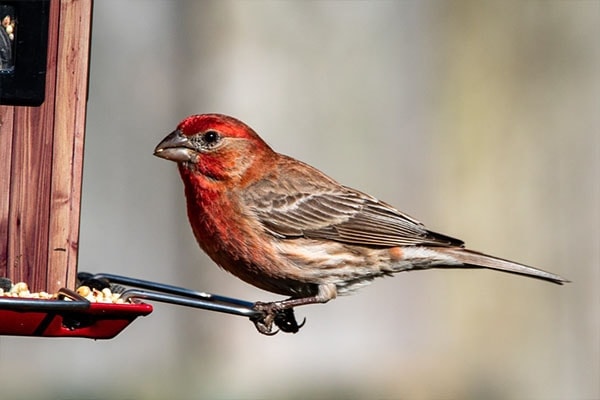
House Finches are known to only eat plants. Among their favorites are budding flowers, berries, pears, peaches, and other fruits. Those in the wild will also eat wild mustard seeds, thistle, mulberry, cactus, and poison oak.
These birds often search for food on the ground. They would sometimes go in flocks, perching in weeds, trees, and branches, looking for food. They would also visit bird feeders that serve sunflower seeds.
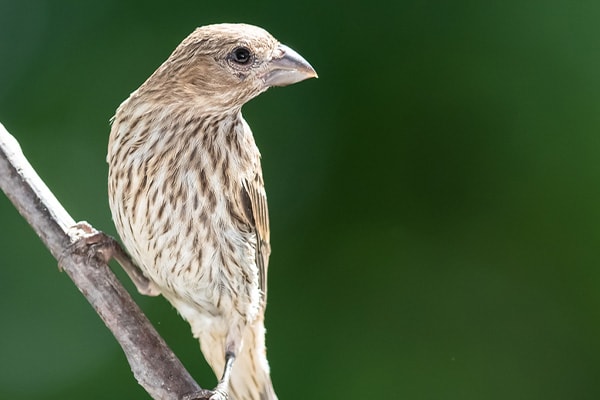
House finch nesting
- Clutch Size: 2-6 eggs
- # of Broods: 1-6 broods
- Incubation Period: 13-14 days
- Nestling Period: 12-19 days
- Egg Description: Pale blue to white, speckled with fine black and pale purple
You’ll often find house Finches’ nests in both natural or human-made habitats. These are sometimes on branches of deciduous or coniferous trees, cactuses, or even rock ledges. Some nest in buildings or even abandoned bird nests.
Females are the ones who build the nest while the males search for the materials. It’s also the males who feed the female birds during the whole incubation.
The nest is built in a shape of a cup and is usually made of grass, leaves, feathers, and small roots. Sometimes, feathers, strings, hair, and other debris are also added to serve as a soft lining of the best.
House finch behavior
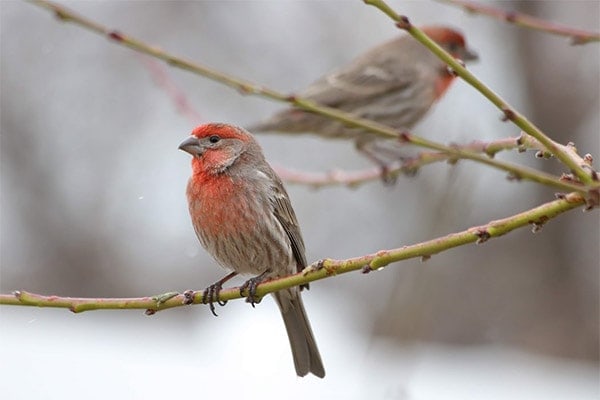
House Finches are most active during the day. These are also highly social birds that usually flock in groups that can be as large as several hundred birds, searching for food in groups.
Even during the breeding season, the birds don’t show any aggressiveness over territory and even nest in close distances. There’s also a dominance hierarchy among the group where females are more dominant than males.
How-to attract house finches
House Finches are known to be frequent visitors of bird feeders. They would usually make sounds to inform you of their arrival, and you need to be prepared. Like most birds, you need to make sure that your backyard can serve everything that the bird needs, from food to water to shelter.
You can start by hanging a tube feeder filled with black oil sunflower seeds on several perches in your backyard. A hopper, platform, or suet feeders should work, too. You can also fill them with millet, nyjer, seeds, or suet.
You can then plant some fruit and seed-bearing trees and shrubs around your backyard. This can be elderberries, crabapple, mulberries, cherries, honeysuckle, or blackberries. You can then plant some trees where they can build their nest.
Don’t forget to provide these birds with water, so a birdbath is definitely something you should have.
House finch threats
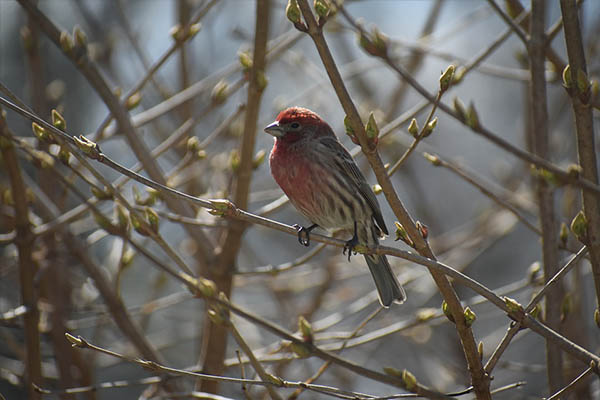
The population of House Finches experienced a significant decline around 1994 because of a terrible disease. Fortunately, today, an increase in the birds’ population has been observed as the birds benefit a lot in the many developments we do.
Predators are the most common threat to the birds and their eggs. This includes domestic cats, hawks, skunks, raccoons, snakes, blue jays, common grackles, and squirrels. But thanks to the birds being social, they tend to protect their kind and stay vigilant in case predators attack.
House finch fun & interesting facts
- Male House Finches change color from red to yellow depending on their diet.
- Female House Finches tend to choose males with the brightest red color.
- They are named in Hawaii as papaya eaters.
- House Finches were not found in the eastern United States before 1940; these birds are said to have been illegally captured in California, imported to New York, and were released on Long Island, where they spread in the east.
- These birds can remember where they can find food and continue to go back to the same feeding site.
- The oldest recorded House Finch was 11 years and seven months old.
- Evening Grosbeak
- Pine Grosbeak
- Gray-crowned Rosy-Finch
- Black Rosy-Finch
- Brown-capped Rosy-Finch
- Purple Finch
- Cassin’s Finch
- Common Redpoll
- Hoary Redpoll
- Red Crossbill
- Cassia Crossbill
- White-winged Crossbill
- Pine Siskin
- Lesser Goldfinch
- Lawrence’s Goldfinch
- American Goldfinch

